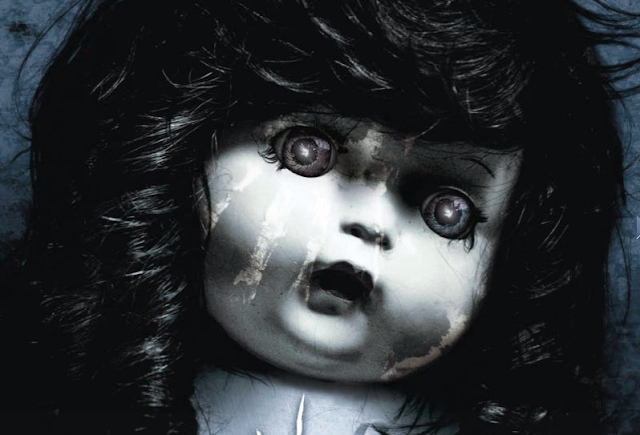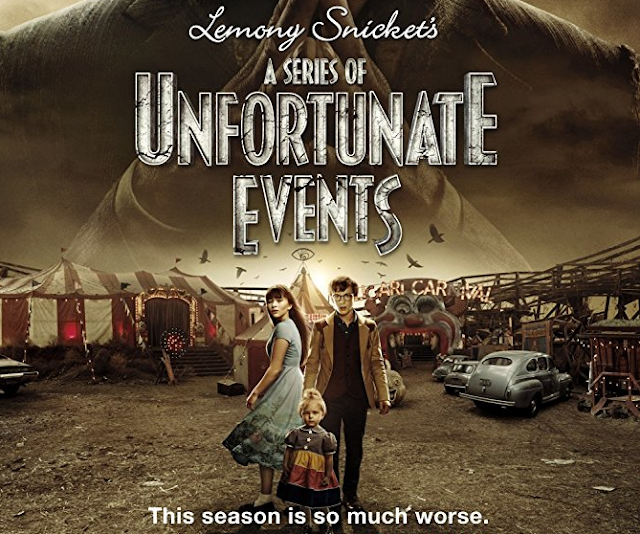Spooktacular Halloween Reads: Thornhill by Pam Smy
Thornhill by Pam Smy
Halloween Booo-k Recommendations To Get
You in The Spirit For a Scare!
 When young Ella moves to the English countryside with her father in the frosty, gray days of March she sees something most peculiar from her bedroom window. An imposing gothic mansion, surrounded by barriers of barbed wire and no trespassing signs directly across the street. Picking through the overgrown garden one afternoon Ella sees a grim-faced girl, her hair pulled into two plaits hanging limply to her shoulders.
When young Ella moves to the English countryside with her father in the frosty, gray days of March she sees something most peculiar from her bedroom window. An imposing gothic mansion, surrounded by barriers of barbed wire and no trespassing signs directly across the street. Picking through the overgrown garden one afternoon Ella sees a grim-faced girl, her hair pulled into two plaits hanging limply to her shoulders.
A girl who Ella is desperate to unravel the mystery behind.
So begins Ella’s daily adventures sneaking into Thornhill. She leaves her empty new house behind to lose herself in an empty old house. A cobwebby, antique furnished monstrosity with creaky doors, peeling, defaced walls, and splintered floorboards. Thornhill is a shady, treacherous death trap but Ella can’t deny her attraction to it and her need to find out more about the peculiar girl.
The haunted house or evil house tale is one of my favourites. I often seek out this horror narrative in movies (Guillermo del Toro’s Crimson Peak) tv shows (Netflix’s The Haunting Of Hill House) and podcasts (And That’s Why Drink’s Amityville Horror episode). My expectations for these stories to scare the pants off me and make me scream my lungs out is high. HELLA high. I went into reading Thornhill with my demanding judgemental horror house loving self and I came away from the book with chills, pleasantly surprised by its spookiness.
Thornhill’s story is told in a blend of illustrations and prose. The point of view alters every few pages and shifts from visuals to words.
Ella’s narrative takes place in 2017 and is one of pen and ink wanderings around a deserted and creaky old house.
Author Pam Sym did all of the art for Thornhill which only adds to the seamless and harmonious combination of the two. She knows exactly what emotions she wants to evoke and how to express it in her art.
The chilling ambiance she conjures up in Ella’s point of view, a world saturated in black, white and gray is ominous and foreboding.
With every step Ella takes in her quest to befriend the mysterious waif lurking around the abandoned Thornhill our heart leaps. We find ourselves wanting to reach into the pages and tell her to stop, to turn back, to forget about Thornhill. To forget about that dark-eyed, unsmiling girl and trying to unearth her past.
Mary’s part is prose counterpart to Ella’s graphic novel point of view. Mary’s narrative occurs thirty-five years earlier in 1982 and comes in the form of soul-baring journal entries. Sensitive and mute Mary lives in a (then) cared for, fully operational Thornhill Institute for Children, a home for orphaned girls. Her voice and her journal entries feel aged. . . like they’re part of another world entirely. If it weren’t for the years written at the top of every entry and mentions of TV rooms and microwaves, I would’ve guessed that Mary’s story took place in the late 1890s or early 1900s.
Mary is relentlessly bullied and only finds comfort and happiness in her collection of handmade marionettes and dolls. Erm...we all need to do things that make us happy... Eheh. Whether they’re creepy AF or not.
(They are definitely CREEPY AF) Her (questionable) hobby fills her attic bedroom with dozens of unblinking eyes and lifeless painted faces.
Unsurprisingly it only makes Mary even more of an outsider at Thornhill- the other girls and even the caretakers who run the centre find them unbearably freaky. (I’m with them there.)
Thornhill is reminiscent of Brian Selznick’s signature blend of graphic novel interwoven with traditional prose storytelling in Wonderstruck and Hugo Cabret. It’s like a creepier Selznick story that meets the dark whimsy of Tim Burton and the elegant horror of Guillermo del Toro.
I read Thornhill in one sitting. Flipping through page after page, a mounting sense of dread hooked into to me like claws.
Mary and Ella’s personalities instantly stand out and we get pulled very closely into both of their lives. Both girls are dimensional and can easily be girls readers actually know in their own life, away from the pages of a book.
Their emotions practically catapult off the pages. As Mary beckons Ella deeper into the ruins of Thornhill, her journal entries get more and more paranoid and unsettling. As Thornhill is consumed with shadows and malevolent forces it tightens around Mary, confining her to her room, rattling her and stirring her up into a storm of emotions.
What’s so disturbing and disquieting about Thornhill and the girls is that this is so real. Mary’s tragic tale and her anguish is authentic. Horrific and haunting occurrences aren’t limited to just Halloween stories. In Thornhill monsters and demons aren’t horned, scaly, beasts from the netherworld. In Thornhill’s world, they lurk inside everyone. All of us are capable of cruelty. Of indulging in our desires to taunt, cut down, or utterly eviscerate whoever we want to with our words and actions.
In Thornhill’s world ghosts don’t have to be dead. Very living, breathing, bleeding, girls can be whittled down to a mere shadow of themselves. Isolation, friendlessness and being caught in the jaws of crippling silence are just as capable of destroying and mutilating someone beyond recognition as being hacked apart by a chainsaw wielded by a bloodthirsty psycho. Ok. Maybe it’s not THAT savage. But it’s close. Fine line, friends, fine line.
Thornhill is a dramatic and unnerving story filled with tormented characters falling unhinged, collections of eerie puppets and dolls, and lonely young girls desperate for a friend. It’s a spine-chilling tale perfect for these dark, and cold October nights.
Recommended.










Comments
Post a Comment